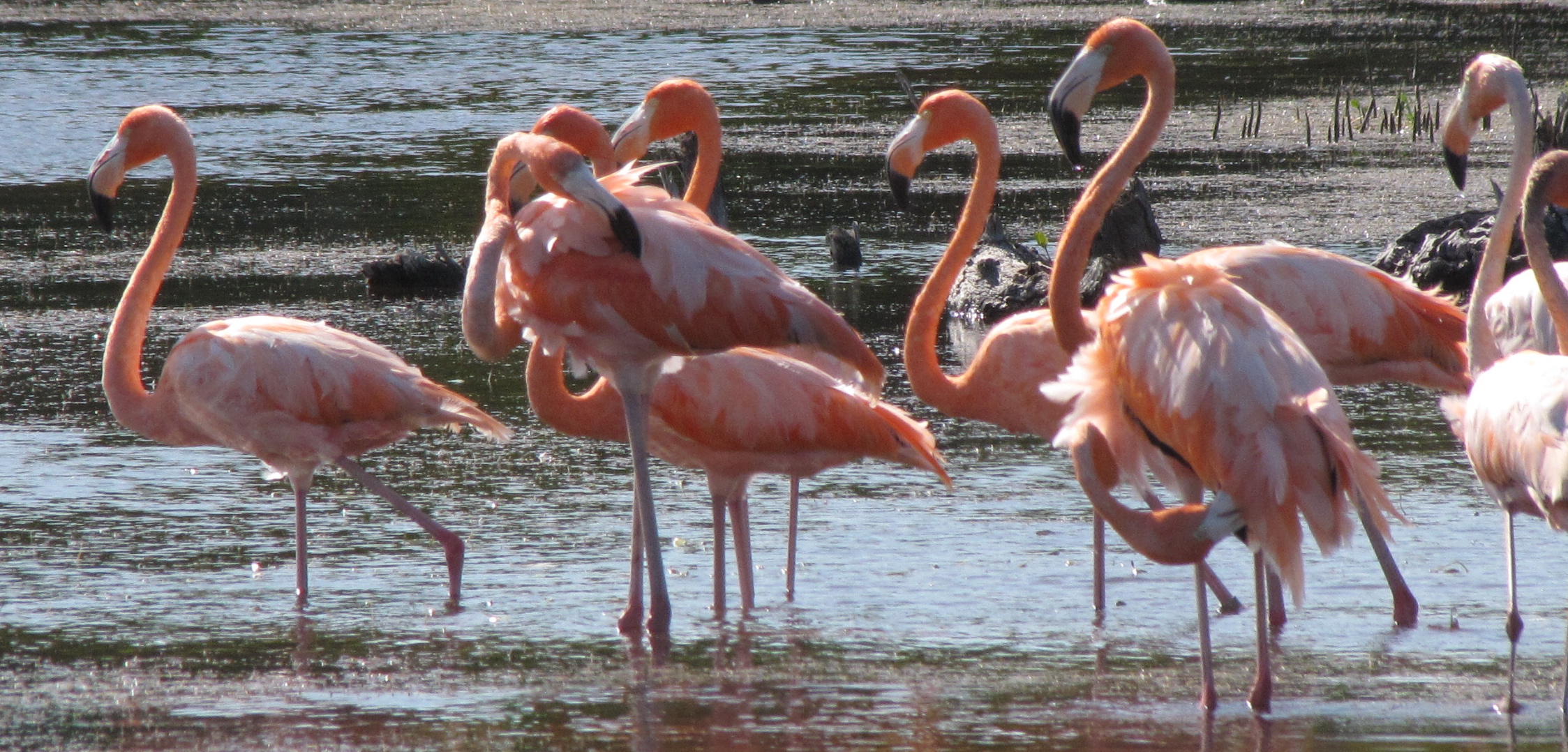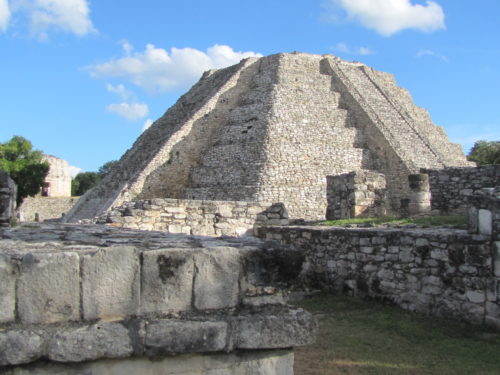
“Help Mates” (a family portrait of Adam & Eve); my acrylic painting, 2019
Historian Yuval Noah Harari has said : my most central idea is simple. It’s the primacy of fictions, that to understand the world you need to take stories seriously. The story in which you believe shapes the society that you create. ~ from NYTimes interview, with David Marchese, Nov 7, 2021
Philosopher David Hume imagined an adult Adam opening his eyes in the garden, having no experience upon which to base any perceptions. (Blink!) Adam can conclude nothing. But interpretation is everything. How to proceed? How to process the story of humanity born into Nature’s reality?
The bully-world preaches “us versus them” — insiders, and outsiders — our tribe, and all those other folks. Yet a longstanding “minority” position is that we humans are all ONE. Einstein reflected upon this:
A human being is part of the whole, called by us “Universe,” a part limited in time and space. He experiences himself, his thoughts and feelings as something separate from the rest, a kind of optical delusion of his consciousness. The striving to free oneself from this delusion is the one issue of true religion. Not to nourish the delusion but to try to overcome it is the way to reach the attainable measure of peace of mind. (quoted from p.13, EINSTEIN and the RABBI, by Naomi Levy.)
We can hold to this, in part, because one is the only real number — everything else is fractions, and factions. Yet humanity is a rainbow of colors all streaming light — but only if we will allow ourselves to sample, to refract and behold them. However there is often tension between interpretation of stories, and reality.
We all arrive here like Adam or Eve, genderless initially; innocent according to some; or guilty of the sins of our ancestors according to others — attempting to fathom the story we’re awakening into — asking ourselves: “are we awake yet, or is this still dreamland?” Big questions pose themselves : what is consciousness? what is real? who am I? who, these others? who’s narrating? am I inventing everything on the fly? Is it too late to sleep-in today?
Who are you?
Since my own arrival in this global theater many decades ago, I have favored a minority position (along with Carroll’s Alice) — that the world is not what it seems – which is to say not “fallen” – but perhaps reality is merely distorted in a fractured mirror. So often, so many of us are persuaded that the senses reign, reporting all there is to be known – that it’s all a hot mess, with nature being indifferent to our plight. And so the questions persist as the story unfolds: What is allegory? What is apocalypse (revelation) ? How are we to read this story? Are we willing to do our own thinking, or should we allow an authority figure to tell us what is “settled” dogma, the majority view — “it’s true because they said so”. Well, curb that dogma!
Every culture has a creation myth. With an open mind, let’s now revisit two famous creation stories which are prominent in modern western society, favoring neither, curiously questing for truth: a science story (Darwin, mostly); and a religion story (Adam & Eve).
The religion story is older, so we’ll look there first. The word myth regarding Adam and Eve might find you preparing to decamp, but please stay. Rest assured that I don’t intend to damage anyone’s faith, instead seeking grounding on reason, with some help from the Bible.
Creation myths began in pre-history, and were forms of both philosophy and entertainment, shared around the campfire at night, after we invented language. They ask how the world came about – but especially, why bad stuff happens, like: why did a tiger eat little Gorq – stuff which is a theme of the Garden-of-Eden story, proceeding to the first murder, in chapter 4.
A Tiger is coming by Kenn Amdahl
A tiger is coming, I don’t know his name
But he moves like a shadow at dusk.
He waits with the sureness of death for his claim
In the stillness of spice trees and musk.
A tiger is coming , I’ve not seen his face
But I’ve heard the grass sigh in his wake.
There is no philosophy in his cold eyes
And his fangs leave no room for mistake.
The tiger who comes, I can’t say who he loves
But he whispers a name to the moon.
His muscles ripple like silk when he turns —
Yes, a tiger is coming here soon.
Source: The Wordguise Alembic, Volume One (fair use)
In ages past, a philosopher named Leibniz, in an attempt to defend God against charges of either indifference or impotence, named such bad stuff theodicy, and he advanced a view that claimed that our world is the best of all possible worlds. Another philosopher, Voltaire, (their lives overlapped; Volatire was 50-years his junior) wrote a satirical-fictional account titled Candide, after a huge, nonfictional tsunami hit Lisbon, Portugal, during the very hour of prayer one Sunday morning in 1755, killing thousands, in church and out. Bad stuff!
The account of Adam and Eve, from Genesis 2:6 – thru chapter 4, was an effort to explain such bad stuff thousands of years earlier. But many of us have been told by parents or clergy that this second account of creation is literal – and that the entire Bible is historically true. (Einstein once said that just because you believe in something doesn’t make it true.) Ironically, those who read their Bibles as history may not have noticed that there are two distinct creation stories present.
Genesis 1 sets forth a radical account of creation in which God (Elohim, plural in Hebrew, remembering that the Bible was not written in English) — God spoke everything into being – a spiritual creation, an ideal, without dust-infused people – where humankind had dominion over all the creatures, and “behold it was very good”.
Genesis 2 (v.6 and beyond) is quite different, so both accounts can’t be true, as they are contrary to each other, yet many readers conflate them into a single story. But they were each written at different times and places, set down from oral tradition by different human authors with different writing styles. How do we know? By using a powerful tool which we’ve come to call rationality, or logic (narrowly termed biblical criticism in this case.) Let’s ask ourselves this: When God said Let there be light (1:3) – how could there be light on Earth before there is sun, moon, or stars (as in 1:14)? Or, from chapter 2, comparatively: how could humans arrive before plants, animals and rain? In this second story we encounter a different name, LORD GOD, (Jehovah, “the existing one”). Wait, I thought the Creator’s name was Elohim! (More on such topics later.)
Some of these same readers seem quick to blame woman (see 3:20 – Eve; life; life-giver; mother of life) for eating and sharing “the apple”. Well, go have a look for an apple in that story. Read carefully. Ain’t no apple! (If this be you, you’ve swallowed stem, core and seeds of a cultural fruit.) If, as a result you feel duped by religious culture, don’t walk away. Instead, let’s ask ourselves about the story’s utility. The human mind seems always to want to blame somebody; and if it can’t blame woman, then it blames God who gave me this woman. After all, in the second version of the story God gives lonely Adam a little piece of Adam’s own self! Well, what can we gain from such a story, rather than rejecting it outright? Surely it has instructive purpose or it wouldn’t have lasted this long.

Uploaded by Anna Rust to P-¡nterest (Fair Use)
Perhaps you’ve heard of modus operandi from reading Sherlock Holmes or watching police shows, in which carefully detected habits of mind are often key to solving mysteries. Couldn’t this second creation account be there to help us understand the behavior of the human mind? — to catch it in the act of deception or lazy habit?
You may have heard of an old film Inherit the Wind, about the Scopes Monkey Trial, documenting a quest to prevent discussion of evolution in public schools — based upon an actual court case in which science does battle with religious sentiments. (There is also an episode of The Simpsons, titled The Monkey Suit about this event.) How will we ever understand life if we unreasonably restrict discussion of ideas in public education? If education has become “what to think” instead of “how to think” — our society is in deep trouble.
Did you know that Hitler took over national funding of German churches by the state shortly after he rose to power? See STRANGE GLORY: Bonhoeffer, by Charles Marsh. Did you know that “scientific atheism” was the official religion of the Soviet Union, enshrined in their constitution? It could be argued that in the USA we have an analog to the Soviet position, redlining discussion of intelligent design in our schools, ruling it an intrusion of religion into education. This asserts a junk argument not unlike the Soviets. Let me explain:
Our First Amendment was created to protect the state from the church, and the church from the state. It’s a brilliant balancing act which has been eroded and is now under attack, because strident people on both sides of our creation myths have become warriors over words, over stories, and have rejected rational approaches. (Can you hear the sound of jackboots marching today, wanting to tear down that wall of separation?) But the jackboot could be on the other foot, if separation of church and state is lost. Yes, prohibiting discussion of origin-of-life evidence in biology class is anti-scientific, and anti-philosophical, which is to say anti-educational. The study of origin-of-life has nothing to do with religion. It’s a scientific inquiry. But a lower court has decided otherwise, (see Dover School District case).
What do you think you know about “Intelligent Design”? Many have heard that a court decided ID was an attempt to import religion into biology class. (The actual decision declared that students could not even be told there was a book in the school library about intelligent design.) But was the judge’s finding that ID was “not science” a valid finding? (Turns out that many scientists have been rabidly against ID research, and the deck had been stacked in the Dover school board decision by such biased scientists and lawyers.) Earlier, a highly-regarded biophysics professor, Dean Kenyon, was removed from teaching freshman biology at San Francisco State, for his position on ID. (His assignment was restored later by a faculty vote of 25-8, all biologist colleagues voting against him.) What gives? Is ID a scientific inquiry, or not?
Ideas on design and evolution, in my view, have been wrongly red-lined by courts — but science has some “storied” issues of its own on this topic. Apparently there’s been some major fakery of evidence in the past (eg: Ernst Haeckel’s Embryos), thumbing the scale in favor of a case for evolution — chance, over intelligent design.
But let’s be very careful that we not conflate ID with “young-earth creationism” as so many journalists have done with a knee-jerk examination of cursory sources. So I’ll cite two sources arguing credibly on behalf of intelligent design — one for the religion crowd, by a former legal journalist who is also a former atheist, now a pastor: THE CASE FOR A CREATOR. And another author with three science degrees, including a PhD (Cambridge U): SIGNATURE IN THE CELL. Both books are science-centric, and well told.
As a retired designer, I may be biased, but I don’t recall ever having seen a design without a designer. I also have a scientific bent, with a deep respect for basic principles, that is, for grounding – for a solid foundation. Most designers start with a plan. Randomness, like evolution, rejects planning, favoring chance. So, how long would you need to shake your box of Lego’s before the Eiffel Tower assembled itself? Well, 13.7 billion years (the age of the known universe) is not enough time. Chance has been debunked by rigorous origin-of-life research – by math. Signature… overrules spontaneous generation thoroughly, establishing that there aren’t sufficient probabilistic resources (time and particles) in the universe to assemble even the simplest of cells. Many of us were told in biology class that life came from “spontaneous generation” – brewed in pond scum or near volcanic vents. Yet there is no evidence for this teaching. Zero! Not scientific!
Einstein once said “make everything as simple as possible, but not simpler.” This is a central aspect of intelligent design, which, ironically can no longer be discussed in American public high school biology classes. Yet discussion is how we learn! And both Michael Behe’s mousetrap-analogy, and the RNA molecule itself, still need their simplest parts.
Could there have been a Divine Design, a Principle that spoke beauty and order into being, roiling the heavens with Life? Or, is chaos a creator? — Sounds like a reasonable discussion to me, especially if hard evidence is lacking for either claim (see “argument from ignorance” in Signature…). Real science proceeds by asking What is the best explanation? Intelligent design can’t be ruled out by baseless arguments claiming spontaneous generation. If we can’t discuss origin-of-life rationally, science education has been snuffed.
Logos, a Greek word from where we get our English word logic, is another word for reason, or principle-of-order. It’s a safe foundation. Yes, logos is also thought by many to be another name for Jesus of Nazareth, see John 1, where it is rendered Word.) But this could be a restrictive assignment for a rich Greek word. And it should be noted that this same Jesus was declared to be God-in-the-flesh by Emperor Constantine three centuries after the crucifixion, to quell a church fight — yet Constantine didn’t become a Christian until decades later, on his death bed — and his political decision has not been challenged by the mainstream church – see Bart Ehrman HOW JESUS BECAME GOD. However, we need not discuss church history in biology class! Origin-of-life is a scientific quest, in a scientific age. Church history is a separate topic, altogether.
If we look at the friction between science and religion raised by Darwin, termed “non-overlapping magisteria” by the late Harvard biologist, Stephen Jay Gould, we will notice some unscientific storytelling, and some flabby logic. What we have here are distinct belief systems — “churches”, if you will. Professor, there is overlap! (It is further complicated by various science disciplines holding forth with differing scientific methods – “doctrines”.) And many scientists are noticeably strident about refusing to even consider the rigor of ID research. (By the way, there is no discussion of the origin of life in Darwin’s On the Origin of Species. His book is mostly about changes after life began.) Why is the science community refusing to think about this major question? <end of excerpt> more available.
Thanks for reading this excerpt. Inquiries for the author, by interested publishers, could be left in the comment section – for future private exchanges.

























